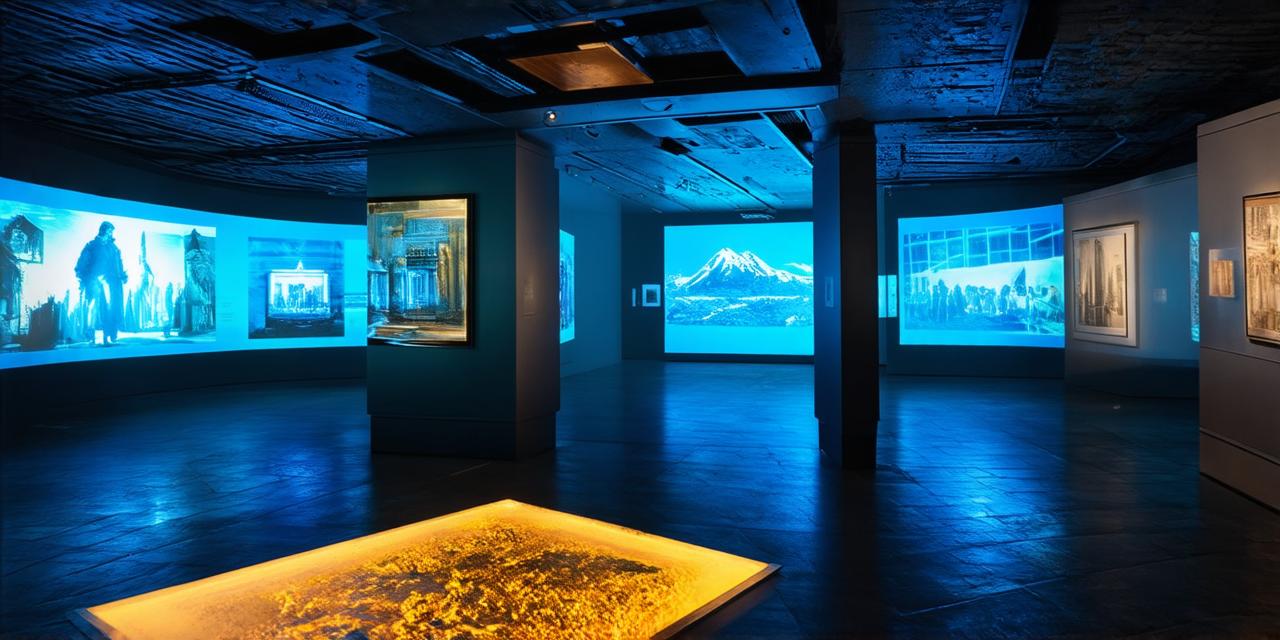As technology advances, museums are incorporating augmented reality (AR) into their exhibits to create more immersive and engaging experiences for visitors.
What is Augmented Reality?

Augmented reality is a technology that overlays digital information onto the real world. This allows users to interact with virtual objects and environments, enhancing their perception of the physical world around them. AR has been used in a variety of fields, including education, marketing, and entertainment. In museums, it’s being used to create more engaging and immersive exhibits that bring history to life.
The Benefits of Augmented Reality in Museums
There are several benefits to using AR in museums:
- Enhanced Visitor Experience: AR allows museum-goers to interact with virtual objects and environments, creating a more immersive and engaging experience. This can help visitors better understand the history and context behind exhibits, making their visit more memorable.
- Increased Engagement: AR makes museums more interactive and fun, which can increase visitor engagement. This can be especially important for younger generations who may not have had as many opportunities to visit museums in the past.
- Improved Accessibility: AR can help make museum exhibits more accessible to visitors with disabilities by providing alternative means of experiencing the content. For example, visitors with hearing impairments can use AR headsets to read captions and descriptions, while visually impaired visitors can use audio guides to navigate the exhibit.
- Cost-Effective: AR technology can be cost-effective in the long run, as it allows museums to create more engaging exhibits without having to spend large sums of money on physical displays.
Real-Life Examples of Augmented Reality in Museums
There are several examples of how augmented reality is being used in museums:
- The Louvre Museum in Paris uses an AR app called “Musee en ligne” to provide virtual tours of the museum’s exhibits. Visitors can explore the museum from the comfort of their own homes, or use the app to enhance their in-person visit by learning more about specific exhibits and artifacts.
- The British Museum in London uses AR to create interactive exhibits that allow visitors to learn more about ancient Egyptian culture. For example, visitors can use an AR app to see how hieroglyphics would have looked on papyrus scrolls, or explore the inner workings of an ancient Egyptian sarcophagus.
- The Smithsonian National Museum of African American History and Culture in Washington D.C. uses AR to create interactive exhibits that allow visitors to learn more about the history and culture of African Americans in the United States. For example, visitors can use an AR app to see how a slave ship would have looked and operated, or explore the history of jazz music in America.
- The National Museum of the United States Air Force in Dayton, Ohio uses AR to create interactive exhibits that allow visitors to learn more about military aircraft and their role in history. For example, visitors can use an AR app to see how a World War II-era fighter plane would have looked and operated, or explore the history of the Wright brothers and their role in aviation.
Summary
Augmented reality is a powerful tool that museums can use to create more engaging and immersive exhibits. By allowing visitors to interact with virtual objects and environments, AR can help bring history to life in a whole new way.
